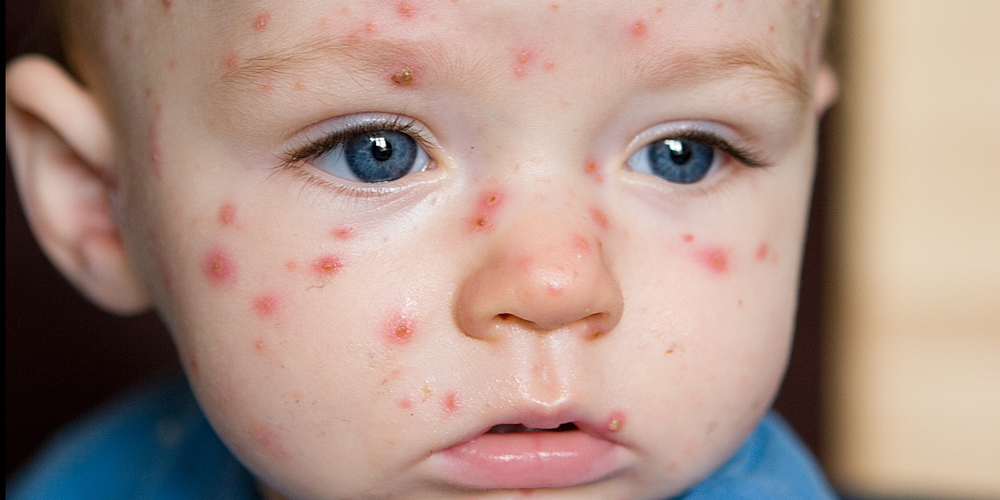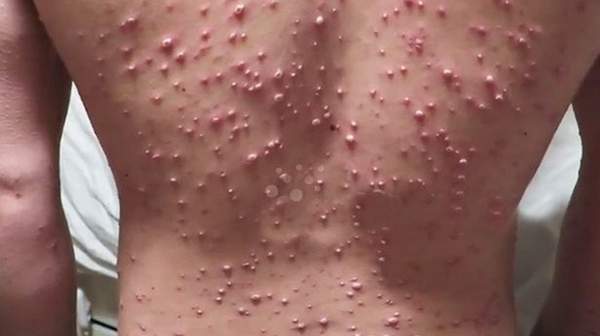What's in this article?
What is Chickenpox?
Chickenpox (or chicken pox) is a highly contagious disease caused by primary infection with varicella zoster virus (VZV). It usually starts with vesicular skin rash mainly on the body and head rather than at the periphery and becomes itchy, raw pockmarks, which mostly heal without scarring.
Chickenpox (varicella) is a common illness that causes an itchy rash and red spots or blisters (pox) all over the body. It is most common in children, but most people will get chickenpox at some point in their lives if they have not had the chickenpox vaccine.
2.png)
Chickenpox can cause problems for pregnant women, newborns, teens and adults, and people who have immune system problems that make it hard for the body to fight infection. Chickenpox usually isn’t a serious health problem in healthy children. But a child with chickenpox needs to stay home from school. And you may need to miss work in order to care for your child.
After you have had chickenpox, you are not likely to get it again. But the virus stays in your body long after you get over the illness. If the virus becomes active again, it can cause a painful viral infection called shingles.
What are the Symptoms of Chickenpox?
The first symptoms of chickenpox often are a fever, a headache, and a sore throat. You or your child may feel sick, tired, and not very hungry. The chickenpox rash camera usually appears about 1 or 2 days after the first symptoms start. Some children get the chickenpox rash without having a fever or other early symptoms.
It usually takes 14 to 16 days to get the symptoms of chickenpox after you have been around someone with the virus. This is called the incubation period.
After a chickenpox red spot appears, it usually takes about 1 or 2 days for the spot to go through all its stages. This includes blistering, bursting, drying, and crusting over. New red spots will appear every day for up to 5 to 7 days.
You or your child can go back to work, school, or day care when all blisters have crusted over. This is usually about 10 days after the first symptoms start.
Other illnesses can have symptoms like those of chickenpox. For this reason, you may think you have had chickenpox twice when instead you have had two different infections.
Chickenpox Causes and how is it spread?
What are the symptoms? is caused by the varicella-zoster virus. It can spread easily. You can get it from an infected person who sneezes, coughs, or shares food or drinks. You can also get it if you touch the fluid from a chickenpox blister.
A person who has chickenpox can spread the virus even before he or she has any symptoms. Chickenpox is most easily spread from 2 to 3 days before the rash appears until all the blisters have crusted over.
You are at risk for chickenpox if you have never had the illness and have not had the chickenpox vaccine. If someone you live with gets chickenpox, your risk is even higher because of the close contact.
What are the treatments for Chickenpox?
Chickenpox is extremely contagious. Keep your child at home until all of the blisters have burst and crusted over.
Most cases of chickenpox require little or no treatment beyond treating the symptoms.
The prescription antiviral drug aciclovir is effective for shortening the duration of chickenpox symptoms and may be recommended for certain people with chickenpox, such as pregnant women, those with a weakened immune system, and adults who seek medical advice within 24 hours of the rash appearing.
In addition, your doctor may recommend over-the-counter painkillers and anantihistamine to relieve pain, itching and swelling. Antibiotics are called for if a secondary bacterial skin infection arises or if the person with chickenpox develops bacterial pneumonia.
Can chickenpox be prevented with a vaccine?
Most people develop lifetime immunity to chickenpox after the first occurrence and never experience it again. But the virus can sometimes resurface later in life as shingles (zoster). The current aim in the U.S. and many other countries is to achieve universal (or nearly universal) immunization of children with the chickenpox vaccine. The vaccination requires only two shots. The first vaccination is given at about 1 year of age, and the second (booster) is given at 4 years of age. If an older person has not had chickenpox, the shot may be given at any time. There have been few significant adverse reactions to the chickenpox vaccine. All children, except those with a compromised immune system, should have the vaccination.
Chickenpox Vaccine ← Read more
The vaccine against varicella-zoster virus that causes chicken pox is the most commonly refused childhood vaccine; both parents and health care professionals view chicken pox as the least severe vaccine-preventable disease. Prior to varicella vaccine licensure in 1995, however, there were 4 million cases of chickenpox infection annually, resulting in more than 10,000 hospitalizations and 100 deaths per year in the United States. Since licensure, universal immunization has reduced by 80 percent annual morbidity, mortality and hospitalizations from chicken pox.


1.jpg)
3.jpg)




Article writing is also a excitement, if you be familiar with then you can write if not it is complex to
write.
Here is my blog post: site ()